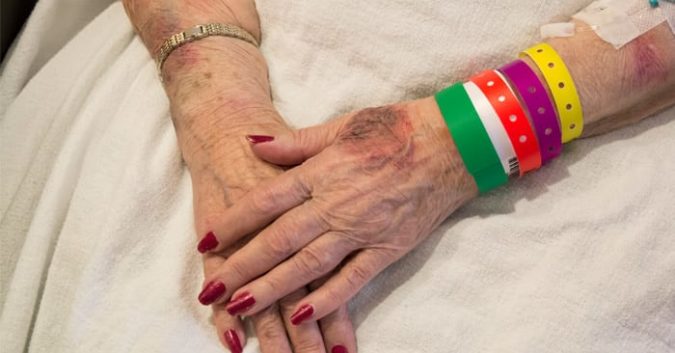While the Trump administration is trying to reduce penalties nursing homes pay in cases of abuse and neglect, a recent New York Times article is an example of why such fines are crucial for keeping such businesses in check.
The Times’s report begins with the story of the Allenbrooke Nursing and Rehabilitation Center, a Memphis facility that was grossly underfunded. Due to a lack of adequate staffing and patient abuse and neglect, the nursing home owners were taken to court. Nurses testified that they often did not have enough basic supplies such as sheets and diapers.
At the same time, almost $3 Million of the $12 Million facility budget was paid to companies that had been hired to do physical therapy, provide drugs, and manage the nursing home. This web of corporations was operated by 2 accountants based in Long Island who owned the nursing home in Memphis, and over 30 others across the county.
In this type of arrangement, owners can write contracts to charge nursing homes much more than they would be otherwise charged when contracting for services. In the case of Allenbrooke, the owners profited in the millions.
Nursing Home Owners Hiding Their (Financial) Tracks
The Times article noted that this situation is far from uncommon – in fact, it is sadly an industry norm. Almost 75 percent of nursing homes in the U.S. (or around 11,000) have an arrangement in which those who own the nursing homes have an interest in companies that they hire to do various services.
While it is not strange to have corporations with a common ownership linked together in this way, the connection should lower costs. Yet according to a Kaiser Health News study, nursing homes that functioned this way were more likely to provide sub-standard care.
At such homes there were 8 percent fewer staff members, and an injury rate that was almost 10 percent higher than at independent homes. Further, while independent homes had 32 complaints per 1,000 patients on average, that was far less than 53 complaints per 1,000 residents in homes with corporate ties.
The Tangled Legal Web
During the past few decades, there has been an increasing trend among nursing home owners to have the facilities classified as limited liability corporations. If these homes are not part of their other business interests, they cannot be fined as stiffly if they are sued by patients. It is difficult for families or patients to bring companies that provide services into a lawsuit, which means their profits remain untouched.
Another difficulty patients may have in court is in showing that those in charge of the home were responsible for negligence or abuse, even though they control the amount of money provided for staffing. Going to court isn’t even an option for many nursing home residents, because often upon admittance new residents are often forced to sign contracts that mandate arbitration in case of a dispute. This system can further conceal a nursing home’s history of abuse and neglect that would otherwise be revealed in a court case.
Exercised to Excess
Nursing home residents can also be subjected to over-care. Some facilities have been accused of providing excessive treatment and exhausting patients, so the home can bill the state for daily “therapy.” At the same time, many nursing home residents suffer from dehydration and malnutrition since facilities do not have enough aides to provide adequate care.
Nursing home owners have found it is less expensive to go to court over abuse and neglect cases than it is to hire more staff. Yet nursing home residents are not the only victims; staff are often overworked and underpaid.
Such conditions lead not only to residents being neglected (given that staff do not have time to perform all their duties), but frustrated aides are also more likely to abuse those in their care.
Non-Profit Homes and Communities of Care
While for-profit nursing homes often create conditions that are tragic and inhumane, non-profit nursing homes have traditionally been much more successful in providing good care. These facilities tend to have close ties to their community, use local volunteers, and accept donations of food and clothing for residents. Further, without the profit motive, such homes are more likely to invest revenue back into the business and providing quality care.
When selecting a nursing home, individuals and their family members must choose with caution. Yet while non-profit homes are more likely to be the best choice, not every family has that option. Given the steadily aging population, there is no better time to push toward the formation of more nursing homes that put their patients first, a model that now unfortunately seems all too scarce.
